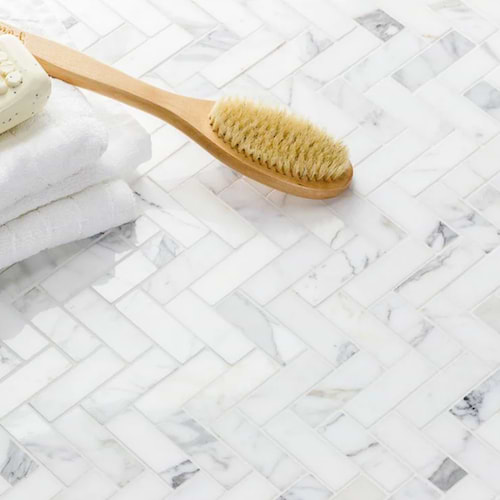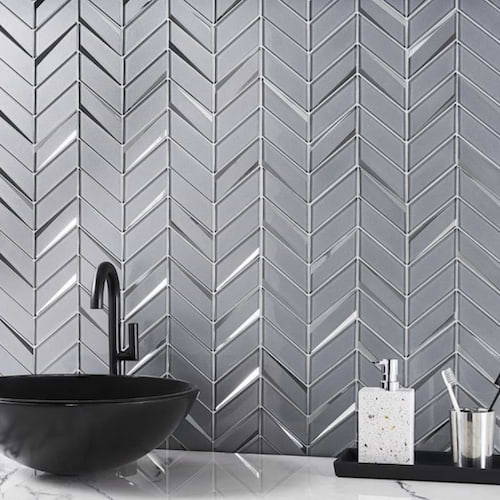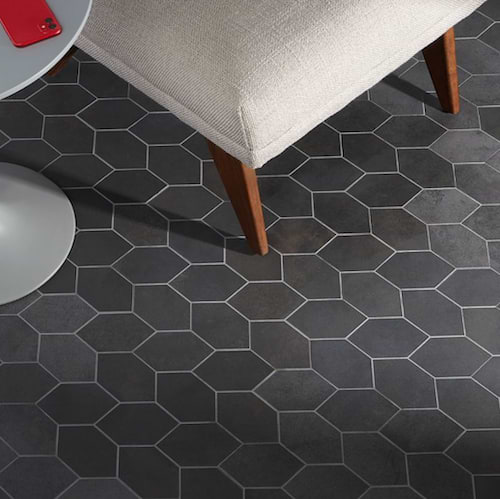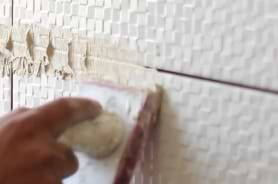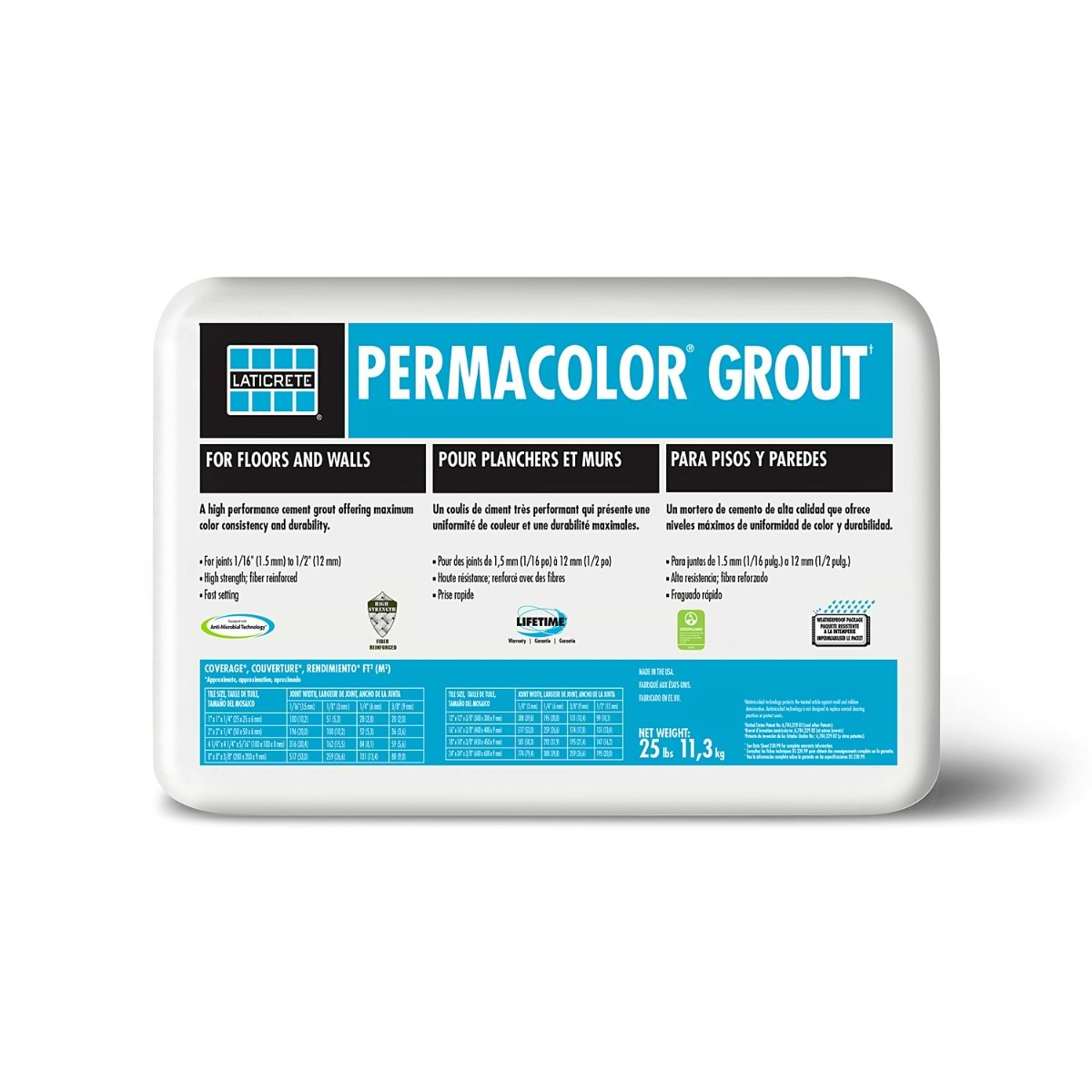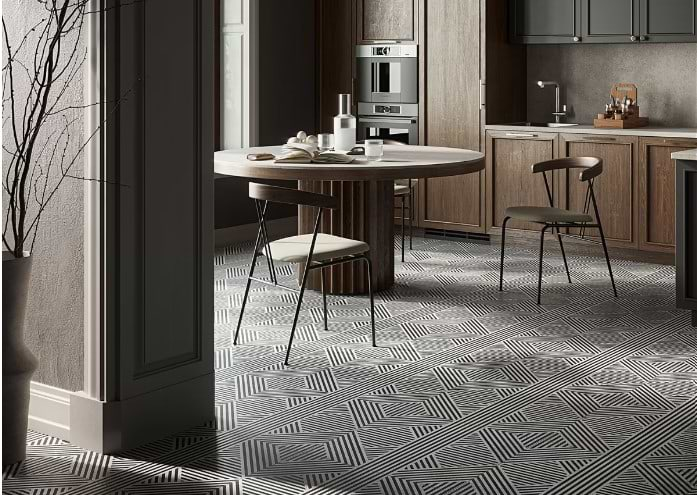What Is Mosaic Tile?
Mosaic tiling is one of the most ancient art forms in the world, practiced for thousands of years in almost every corner of the globe. Today, mosaic tiles are still a popular choice for designers and architects, but the variety of materials and patterns is larger than ever. From ceramic to stone to glass, with simple and classic square patterns or intricate designs, contemporary mosaic tiles can be used everywhere, from floors to showers to outdoor spaces.
Bringing interest and texture to space, even the simplest mosaics carry a graphic visual texture to space. Usually composed of small-format fragments attached using adhesives and backing sheets, mosaic tiles combine a play with color, scale, pattern, and material to create a balanced and distinct look in any installation. In this article, we’ll break down the different types of mosaic tiles out there, installation tips and best practices, and design ideas to spark your inspiration.
The Benefits of Mosaic Tiles
- Mosaic tiles are offered in a variety of materials, unlocking limitless design opportunities in almost any installation
- Small-format patterns create a balanced and dynamic geometric composition
- Sold in sheets of mesh-mounted, mosaic tiles make it easy to install unique and intricate patterns
- The mesh backing and smaller fragments allows for less cutting in the installation process
What is Mosaic Tile?
Modern mosaic tiles usually consist of small-scale fragments, conveniently pre-attached using adhesives and other materials to create individual sheets. Most commonly using mesh-mounted backing, these mosaic sheets offer a quicker and simpler way to install intricate patterns in any application while preserving the unique style and texture of the mosaic look.
Mosaic tiles can be made of different materials, from natural stone to ceramic, glass, and even pebble stones. Each material requires specific practices to be accurately cut and assembled into different patterns and maintain and upkeep after installation. A grey pebble shower floor is a great way to add natural texture and sophisticated style. The neutral grey tones keep the space light and airy.

How to Install Mosaic Tile?
Modern mosaic tiles are relatively straightforward when it comes to installation. For one, they do not require as much cutting as other types of tiles, thanks to the mesh backing. In addition, they allow pattern layout faster and more accurately, instead of installing the individual pattern fragments by hand. That being said, installing mosaic tiles requires care and a certain level of experience, particularly when sealing the grout and laying the tiles correctly.
So how does the process work? The installation process of mosaic tiles consists of five basic steps; first, prepare the surface by making sure it is clean, smooth, and flat. Second, plan the layout and position of the pattern to make sure you get the design arrangement you want. Third, apply a thin-set on the back of the sheets. Forth, set your tiles in place, and tap them down firmly using a tapping block or a grout float. Lastly, after the thin-set is cure (after about 24 hours), you can finally grout and finish your project.
Different Types of Mosaic Tiles
Natural Stone Mosaic Tiles
For thousands of years, natural stone mosaics were used for both decorative and functional purposes. Natural stone mosaics come in a huge array of colors, shapes, and finishes, bringing an earthy, classic feel to space.
After they are culled from natural quarries, stones such as slate, marble, limestone, and granite are cut and finished into pieces of tiles. Cutting natural stone into mosaic sheets takes expertise and precision, and the result is a luxurious, durable, and sustainable design that can be used in many applications.
Recommended applications: floors and walls, backsplashes, feature walls, fireplaces, showers, bathrooms, and more.
Glass Mosaic Tile
One of the most common and popular mosaic tiles in the market, glass mosaic tiles offer diverse applications, are easy to clean, and are available in almost every color, pattern, or finish. Glass mosaic tiles combine innovative technology and traditional artistry. This fusion gives them their unique versatility and look.
Glass mosaic tiles can come in translucent, opaque, and even mirrored looks, thanks to the variety of manufacturing techniques the material allows. The most common types of glass mosaic tiles are cast, fused, and coated glass tiles, each offering a different look and design opportunity. Many glass tiles are made of recycled glass, making them both a sustainable and beautifully designed product.
Recommended applications: pools, water features, backsplashes, and feature walls.
Ceramic and Porcelain Mosaic Tile
Offering a highly durable, versatile, and easy-to-maintain option, ceramic and porcelain mosaic tiles are the most popular choice for most spaces. Ceramic and porcelain are two different clay compositions, each providing unique design benefits.
Ceramic mosaic tile is made of natural clay that is fired in a kiln and then is either glazed or unglazed to achieve different levels of durability and unique finishes. It is affordable, durable, and easy to design with. For those seeking a more hardwearing material, porcelain is the answer. A composition of feldspar, white clay, and sand, porcelain is fired at a higher temperature, making it significantly denser and more durable.
Recommended applications: floors and walls in residential and commercial spaces, backsplashes, shower walls, fireplaces, and more.
Waterjet Mosaic Tile
Waterjet mosaic tiles are natural stone mosaics, cut with incredible precision using a waterjet technique. The flawless precision of the waterjet cutting allows for a limitless expanse of shapes, styles, and textures. The process of creating a waterjet mosaic involves a high-pressure stream of water that is strong enough to delicately carve out a pattern out of the stone.
Often, waterjet mosaic tiles incorporate other materials with the natural stone, such as metal, glass, pearl shell, antiqued mirror, and more. The result is usually a sophisticated, bold, and opulent, design that adds interest and creativity to space.
Recommended applications: backsplashes, feature walls, fireplaces, shower walls.
Related Articles
Choosing the Right Grout
Find Your Perfect Grout Match! Color, Texture & Choosing for Your Tile.






